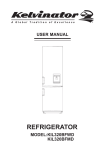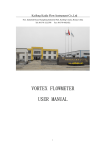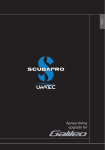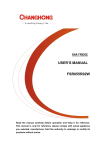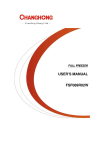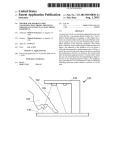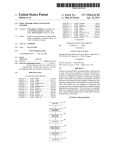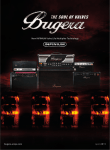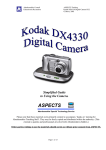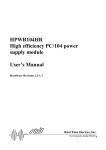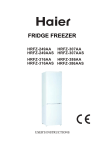Download - Changhong
Transcript
UPRIGHT REFRIGERATOR USER’S MANUAL FSR272R02W Please read the manual carefully before operation and keep it for reference. This manual is only for reference, please comply with actual appliance you selected. manufacturer hold the authority to redesign or modify its products without notice. SAFETY WARNING! It is hazardous for anyone other than authorized service personnel to carry out servicing or repairs which involves the removal of covers. To avoid the risk of an electric shock do not attempt to repair this appliance yourself. Safety tips Do not use electrical appliances such as a hair dryer or heater to defrost your Fridge/Freezer. Containers with flammable gases or liquids can leak at low temperatures. Do not store any containers with flammable materials, such as spray cans, fire extinguisher refill cartridges etc. in the Fridge/Freezer. Do not place carbonated or fizzy drinks in the Freezer compartment. Ice lollies can cause “Frost/Freeze burns”. If consumed straight from the Fridge/Freezer. Do not remove items from the Fridge/Freezer compartment if your hands are damp/wet, as this could cause skin abrasions or “Frost/Freezer burns”. Bottles and cans must not be placed in the Freezer compartment as they can burst when the contents freeze. Manufacturer’s recommended storage times should be adhered to. Refer to relevant instructions. Do not allow children to tamper with the controls or play with the Fridge/Freezer. The Fridge/Freezer is heavy. Care should be taken when moving it. It is dangerous to alter the specification or attempt to modify this product in any way. Do not store inflammable gases or liquids inside you Fridge/Freezer. 1 If the power cable is damaged, it must be replaced by the manufacturer, its service agent or similarly qualified persons in order to avoid a hazard. This appliance is not intended for use by persons (including children) with reduced physical, sensory or mental capabilities, or lack of experience and knowledge, unless they have been given supervision or instruction concerning use of the appliance by a person responsible for their safety. Children should be supervised to ensure that they do not play with the appliance. This appliance is intended to be used in household and similar applications such as ·staff kitchen areas in shops, offices and other working environments; ·farm houses and by clients in hotels, motels and other residential type environments; ·bed and breakfast type environments; ·catering and similar non-retail applications. R600a WARNINGS NOTE: This model uses 0.025Kg of R600a flammable refrigerant in its sealed system. The following must be observed for your safety: R600a Refrigerant Warning • This appliance contains a small quantity of R600a refrigerant which is environmentally friendly, but flammable. It does not damage the ozone layer, nor does it increase the greenhouse effect. • During transportation and installation, ensure that the tubing of the refrigerant circuit is not damaged. • Leaking refrigerant can ignite and may damage the eyes. • In the event any damage does occur, avoid exposure to open fires and any device which creates a spark. Disconnect the appliance from the mains power. • Thoroughly ventilate the room in which the appliance is located for several minutes. • Notify Customer Service for necessary action and advice. • The room for installing the appliance must be at least 1 cubic metre per 8 grams of refrigerant. The refrigerant quantity contained in this appliance is listed above in grams; it is also noted on the Rating Plate of the appliance. It is hazardous for anyone other than an Authorised Service Person to carry out servicing or repairs to this appliance. In Queensland the authorized person must hold a Gas Work Authorisation for hydrocarbon refrigerants, before carrying out servicing or repairs which involve the removal of covers. WARNNING 1.Keep ventilation openings, in the appliance enclosure or in the built-in structure, clear of obstruction. 2.Do not use mechanical devices or other means to accelerate the defrosting process, 2 other than those recommended by the manufacturer. 3.Do not damage the refrigerant circuit. 4.Do not use electrical appliances inside the food storage compartments of the appliance, unless they are of the type recommended by the manufacturer. 5.Do not store explosive substances such as aerosol cans with a flammable propellant in the appliance. Disposal The environment and personal safety must be considered when disposing of this appliance. Please ensure the appliance is taken to a recycle center for safe recycling. DO NOT dispose of the appliance in land fill as the insulation and refrigerant gas contained in these appliances are flammable. Locks If your Fridge/Freezer is fitted with a lock, to prevent children being entrapped keep the key out of reach and not in the vicinity of the appliance. If disposing of an old Fridge/Freezer break off any old locks or latches as a safeguard. INTRODUCTION Before use Please read these instructions and the Safety guidelines on page 2 carefully before using your new Fridge/Freezer. The Fridge/Freezer is for indoor, domestic use only. 3 No Description 1 fan 2 Internal light 3 Thermostat control dial 4 Door switch 5 Adjustable safety glass shelves 6 Salad crisper shelf 7 Salad crisper 8 Adjustable feet 9 General door shelves 10 Bottle shelf INSTALLATION Location When selecting a position for your Fridge/Freezer you should make sure the floor is flat and firm, and the room is well ventilated with an average room temperature of between 16℃ and 38℃. Avoid locating your Fridge/Freezer near a heat source, eg, cooker, boiler 4 or radiator. Also avoid direct sunlight in out-buildings or sun lounges. If you are placing your Fridge/Freezer in an out-building such as a garage or annex ensure that the Fridge/Freezer is placed above the damp course, otherwise condensation will occur on the Fridge/Freezer cabinet. Never place the Fridge/Freezer in a wall recessed or into fitted cabinets or fumiture when your Fridge/Freezer is working, the grille at the back may become hot and the sides warm. It must therefore be installed so that the back of the Fridge/Freezer has at least 9cm(31/2”) of free space and the sides have 2cm(3/4”). Do not drape the Fridge/Freezer with any covering. Leveling the Fridge/Freezer If the Fridge/Freezer is not level, the door and magnetic seal alignment will be affected and may cause you Fridge/Freezer to work incorrectly. Once the Fridge/Freezer is placed in its final location, adjust the leveling feet at the front by turning them. Cleaning before use Wipe the inside of the Fridge/Freezer with a weak solution of bicarbonate of soda. Then rinse with warm water using a damp sponge or cloth. Wash the baskets and shelves in warm soapy water and dry completely before replacing in the Fridge/Freezer. The external parts of the Fridge/Freezer can be cleaned with wax polish. See page 6 for more details on cleaning. Before plugging in YOUMUST Check that you have a socket which is compatible with the plug supplied with the Fridge/Freezer. If not see the section called ELECTRICAL INFORMATION on page 8. Before switching on! DO NOT SWITCH ON UNTIL FOUR HOURS AFTER MOVING THE FRIDGE/FREEZER. The coolant fluid needs time to settle. If the appliance is switched off at any time, wait 30 minutes before switching back on to allow the coolant fluid to settle. 5 Before filling your Fridge/Freezer Before storing foods in your Fridge/Freezer, turn the Fridge/Freezer on and wait for 24 hours, to make sure it is working properly and to allow the Fridge/Freezer to fail to the correct temperature. See page 5 for more details. START Switching on your Fridge/Freezer 1. Before connecting the Fridge/Freezer to the mains supply position. The thermostat control dial is located inside the Fridge compartment. 2. Turn the thermostat knob to the “3” position and turn on the electricity. The compressor and the light inside the refrigerator will begin to work. 3. Wait 24 hours before placing food into the Fridge/Freezer, the temperature inside your Fridge/Freezer will then be cool enough to chill and freeze foods sufficiently. Switching on the appliance and setting the thermostat The temperature setting with five ranks: 2 、4 、5 、6 and 8 , with LED light as indicator, click “+”or “-” to adjust the temperature. Once click “+”, current setting indicator is off and the next light is on, follows “2 →4 →5 →6 →8 ” in sequence, and 8 is the Max setting. Once click “-”, current setting indicator is off and the next light is on, follows “8 →6 →5 →4 →2 ” in sequence, and 2 is the Min setting. All led lights flashing indicates the sensor failure, click “+” or “-“ to confirm the failure, then all led lights on. 6 The POWER button integrates the indicator light. Once plug on, the lighting “POWER” shows the refrigerator is in operating. While in operating, Click “POWER” to stop the refrigerator and the Power light off. Once product off, Click “POWER” to start the refrigerator and the Power light on. Click ”POWER” button to switch the refrigerator work and off. Is the Freezer/Fridge cold enough? If you are at all concerned that your Fridge/Freezer is not being kept cold enough, or you occasionally wish to check the temperature, you can purchase a Fridge/Freezer thermometer. These are available from most supermarkets and hardware shops. Place the thermometer in the Fridge compartment and leave overnight. The correct temperature Should read between 0℃ and 10℃. IN USE Tips for keeping food perfect in the Fridge Take extra care with meat and fish Cooked meats should always be stored on a shelf above raw meats to avoid bacterial transfer. Keep raw meats on a plate which is large enough to collect juices and cover it with cling film or foil. Leave space around food This allows cold air to circulate around the Fridge, ensuring all parts of the Fridge are kept cool. 7 Wrap up food! To prevent transfer of flavors and drying out, food should be separately packed or covered. Fruit and vegetables need not be wrapped. Pre-cooked food should be cooled properly Allow pre-cooked food to cool down before placing in the Fridge. This will help to stop the internal temperature of the Fridge from rising. Shut the door! To prevent cold air escaping, try to limit the number of times you open the door. When retuning from shopping, sort foods to be kept in your Fridge before opening the door. Only open the door to put food in or take it out. Where to store your foods in the fridge Cool area This is where to store foods which will keep longer if they are kept cool. Milk, eggs, yogurt, fruit juices, hard cheeses eg. Cheddar. Opened jars and bottles of salad dressings, sauces and jams. Fats, eg. Butter, margarine, low-fat speads, cooking fats and lard. Coldest area: 0℃ to 5℃ This is where foods which must be cold to keep them safe should be kept: ·Raw and uncooked foods should always be wrapped. ·Pre-cooked chilled foods, eg. Ready meals, meat pies, soft cheeses. ·Pre-cooked meats eg. Ham, ·Prepared salads(including pre-packed mixed green salads, rice, potato salad etc). ·Desserts, eg. Fromage frais, home-prepared food and leftovers or cream cakes. 8 Salad bin This is the most humid part of the Fridge. Vegetables, fruit, fresh salad items eg. Unwashed whole lettuce, whole tomatoes, radishes etc can be stored here. WE RECOMMEND THAT ALL PRODUCE KEPT IN THE SALAD BIN IS WRAPPED. NOTE:Always wrap and store raw meat, poultry and fish on the lowest shelf at the bottom of the fridge. This will stop them dripping onto, or touching other foods. Do not store inflammable gasses or liquids in the fridge. Label everything · Many foods look the same when frozen, so careful labeling will help avoid forgetting what an item is. Storage times being exceeded could cause food poisoning. On home cooked food add the date as you will then be able to make sure you don not eat food past the recommended storage period. · You can buy special Fridge/Freezer labels and pens. Labels come in different colors which can help you use your Fridge/Freezer effectively. For instance you could color code meat red and vegetables green. Using a different color label for each quarter of the year will help you rotate your frozen food more efficiently. · Write the contents and date. Add the weight and notes on cooking such as “thaw first”, or “cook from frozen” and keep a separate “log-book” of what is in each drawer. This will save opening the door and searching around unnecessarily. 9 Recommended storage periods For recommended food storage time, refer to the information given on your food packaging. Cleaning inside the Fridge/Freezer After defrosting you should clean the Fridge/Freezer internally with a weak solution of bicarbonate of soda. Then rinse with warm water using a damp sponge or cloth and wipe dry. Wash the baskets in warm soapy water and ensure they are completely dry before replacing in the Fridge/Freezer. Condensation will form on the back wall of the Fridge; however it will normally run down the back wall and into the drain hole behind the salad bin. The drain hole will have a “cleaning spike” inserted into it. This ensures that small pieces off food can not enter the drain. After you have cleaned the inside of your Fridge and removed any food residues from around the whole, use the “cleaning spike” to make sure that there are no blockages. Cleaning outside the Fridge/Freezer Use standard furniture polish to clean the Fridge/Freezer exterior. Make sure that the doors are closed to prevent polish getting on the magnetic door seal or inside. The grille of the condenser at the back of the Fridge/Freezer and the adjacent 10 components can be vacuumed using a soft brush attachment. Do not use harsh cleaners, scouring pads or solvents to clean any part of the Fridge/Freezer TROUBLESHOOTING AND MAINTENANCE Trouble Shooting Power cut If the internal temperature of the Fridge/Freezer compartment is -18℃ or less when the power returns, your food is safe. The food in your Fridge/Freezer will remain frozen for approx 16 hours with the door closed. Do not open the Fridge/Freezer door more than necessary. The Fridge/Freezer is exceptionally cold You may have accidentally adjusted the thermostat control dial to a higher position. The Fridge/Freezer is exceptionally warm The compressor may not be working. Turn the thermostat control dial to the maximum setting and wait a few minutes. If there is no humming noise, it is not working. Contact the local store where your purchase was made. The Fridge/Freezer is not working Check it is plugged in and switched on. Check that the fuse in the plug has not blown. Plug In another appliance, such as a lamp, to see if the socket is working. The Fridge/Freezer should be placed in a well ventilated room with an ambient temperature of between 16℃ and 38℃. Leave the Fridge/Freezer for 30 minutes. Condensation appears on the outside of the Fridge/Freezer This may be due to a change in the room temperature. Wipe off any residue of moisture. If the problem continues contact the local store where your purchase was made. Noises inside the Fridge/Freezer If you have not owned a Fridge/Freezer before, you may notice that it makes some rather unusual noises. Most noises are perfectly normal; however you should be aware of them! GURGLING, WHOOSHING These noises are caused by the circulation of the refrigerant liquid in the cooling system. It 11 has become more pronounced since the introduction of CFC free gases. This is not a fault and will not affect the performance of your Fridge/Freezer. HUMMING, PURRING OR PULSATING This is the compressor motor working, as it pumps the refrigerant around the system. Moving the Fridge/Freezer Location Do not place your Fridge/Freezer near a heat source, eg. Cooker, boiler or radiator. Also avoid direct sunlight in out-buildings or sun lounges. Leveling the Fridge/Freezer Make sure the Fridge/Freezer is level. Use the rotating leveling feet at the front. If the Fridge/Freezer is not level, the doors and magnetic seal alignments will be affected and may cause your Fridge/Freezer to work incorrectly. Do not turn on the Fridge/Freezer for 4 hours After the Fridge/Freezer is in place it needs to be left for 4 hours. This allows time for the coolant to settle. Installation Don’t cover or block the vents or grilles of your appliance. Servicing This product should be serviced by an authorized engineer and only genuine spare parts should be used. Under no circumstances should you attempt to repair the appliance your self. Repairs carried out by inexperienced persons may cause injury or serious malfunctioning. Contact the local store where your purchase was made. When the appliance is not in use for long periods, disconnect from the electricity supply, empty all foods and clean the appliance, leaving the door ajar to prevent unpleasant smells. Changing the internal light NOTE: The internal light is LED light,the user should not replace it . If the LED light can not work properly, please come to our local or in 12 nearby special repair service department to replace. ELECTRICAL INFORMATION THIS APPLIANCE MUST BE EARTHED. This appliance is fitted with a fused three pin plug to BS 1363 which will be suitable for use in all houses fitted with sockets to current specifications. If the fitted plug is not suitable for your socket outlets, it should be cut off and carefully disposed of. To avoid a possible shock hazard, do not insert the discarded plug into a socket. This appliance complies with the following EEC Directives: 73 / 23 EEC (Low Voltage Directive) 89 / 336 EEC (EMC Directive). Correct Disposal of this product This marking indicates that this product should not be disposed with other household wastes throughout the EU. To prevent possible harm to the environment or human health from uncontrolled waste disposal, recycle it responsibly to promote the sustainable reuse of material resources. To return your used device, please use the return and collection systems or contact the retailer where the product was purchased. They can take this product for environmental safe recycling. 13 14















